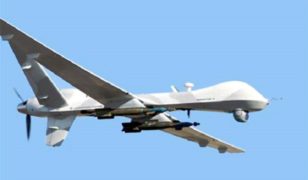Army CERDEC posts RFI for cellular LTE communications
 On October 29, the United States Army issued the following Request for Information (RFI) for cellular long term enabled (LTE) communications. Responses are due no later than COB on November 25.
On October 29, the United States Army issued the following Request for Information (RFI) for cellular long term enabled (LTE) communications. Responses are due no later than COB on November 25.
The US Army Communications Electronics Research & Development Engineering Center (CERDEC) Space & Terrestrial Communications Directorate (S&TCD) is interested in leveraging commercial cellular Long Term Evolution (LTE) communications and smart devices to rapidly deploy new capabilities to the Soldier.
CERDEC S&TCD is interested in receiving information from industry on potential methodologies to mitigate the current limitations in commercial cellular technology for fielding in Military settings.
The US Army Communications Electronics Research & Development Engineering Center (CERDEC) Space & Terrestrial Communications Directorate (S&TCD) is interested in receiving information from companies that have experience in the design, development, and implementation of cellular LTE technology. The focus is to adapt commercial cellular/wireless technology to address Military unique requirements such as spectrum agility, susceptibility, security and architecture.
The objective of the RFI/SS is for vendors to present and provide their cellular expertise and solutions for developing, designing, integrating, and/or deploying Long Term Evolution (LTE) systems, which meet the 3rd Generation Partnership Project (3GPP) standardization, for fixed and mobile platforms (i.e., handheld and tablet devices S&TCD Tactical Communications Division (TCD), Commercial Technology Evaluation and Integration (CTEI) Branch, is particularly interested in receiving mitigation techniques that address the following issues:
-
Spectrum Frequency agility is desired for a Military-adapted LTE system. Commercial 4G LTE basestations and End User Devices (EUD) are designed for frequency bands which are allocated for commercial use. There are practical and policy issues for the Army to utilize commercial frequency bands both CONUS and OCONUS. Allocation of frequency bands per device for Military application may be limited in comparison to commercial networks (1.2 MHz versus 10 – 100 MHz), which significantly reduces data rates.
-
Architecture Architecture and infrastructure solutions are desired for an LTE system that is capable of being deployed in various tactical and multi-cast environments in order to provide cellular communications consisting of voice, video, data, MMS, and/or SMS for multiple users in combat operations. Commercial cellular networks rely on fixed infrastructures, which come with high-profile, densely-populated towers, core networks and backhaul facilities which are not easily mobile and can be easily spotted and targeted by adversaries in a tactical environment. Cellular networks also typically extend the range of coverage by erecting high towers and utilizing large amounts of transmission power, which is not feasible for a tactical setting. CERDEC S&TCD is interested in exploring methods to attain infrastructureless cellular communications and provide range extension and seamless mobility between different communication enclaves.
-
Susceptibility Commercial cellular communication technologies are typically located in friendly environment with little to no concern of adversarial operations. CERDEC S&TCD is interested in potential hardening techniques for the technology to be suitable for Military use.
-
Security Since cyber security and privacy awareness are currently on the rise amongst technology users, commercial communication industry continues to develop and integrate robust security solutions and policies for LTE technologies. Despite these efforts to increase cyber security and privacy policies, current implemented commercial security are not sufficient for Military use. CERDEC S&TCD will evaluate the responses received in order to prepare an acquisition strategy for the LTE developmental effort.
Full information is available here.
Source: FedBizOpps








